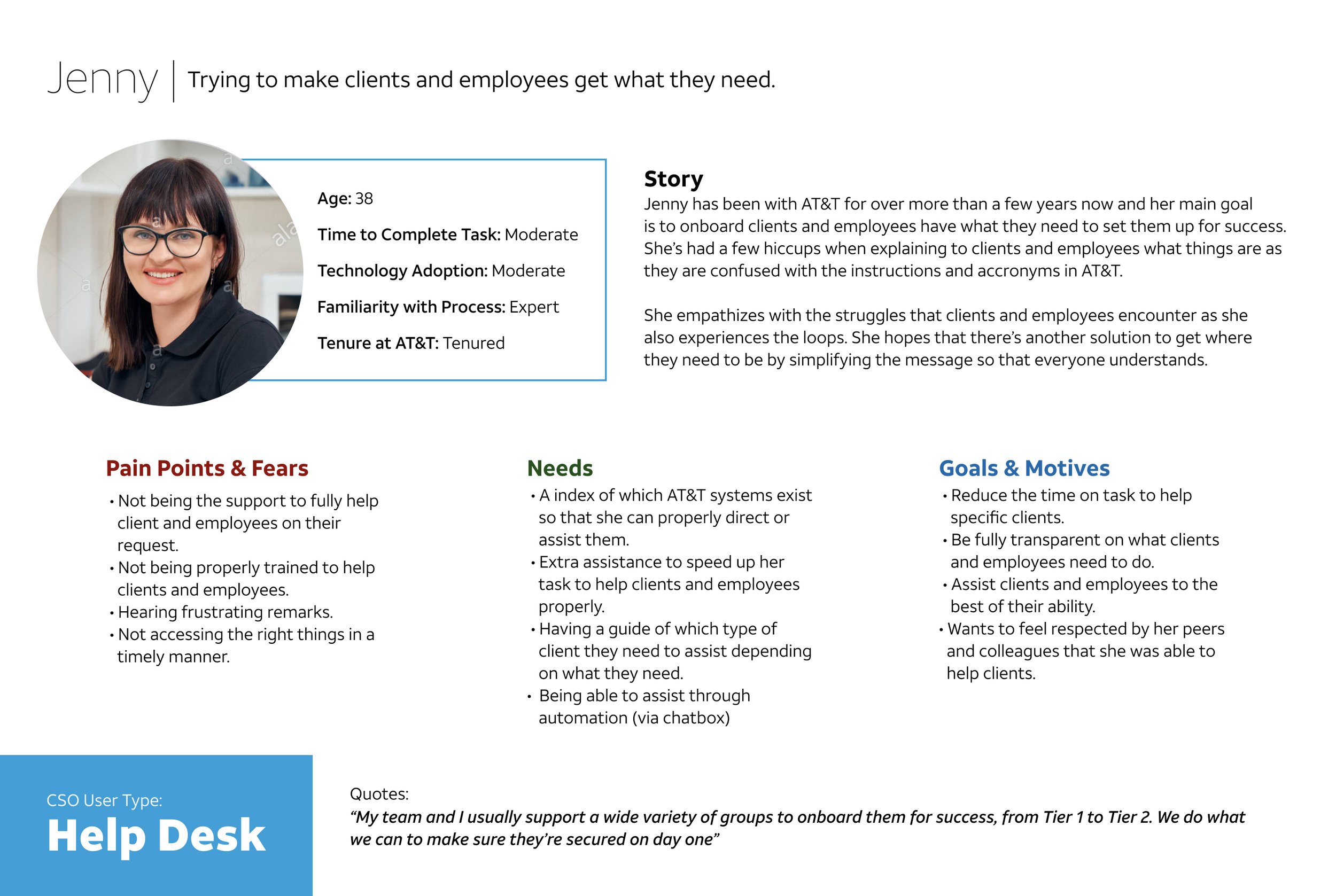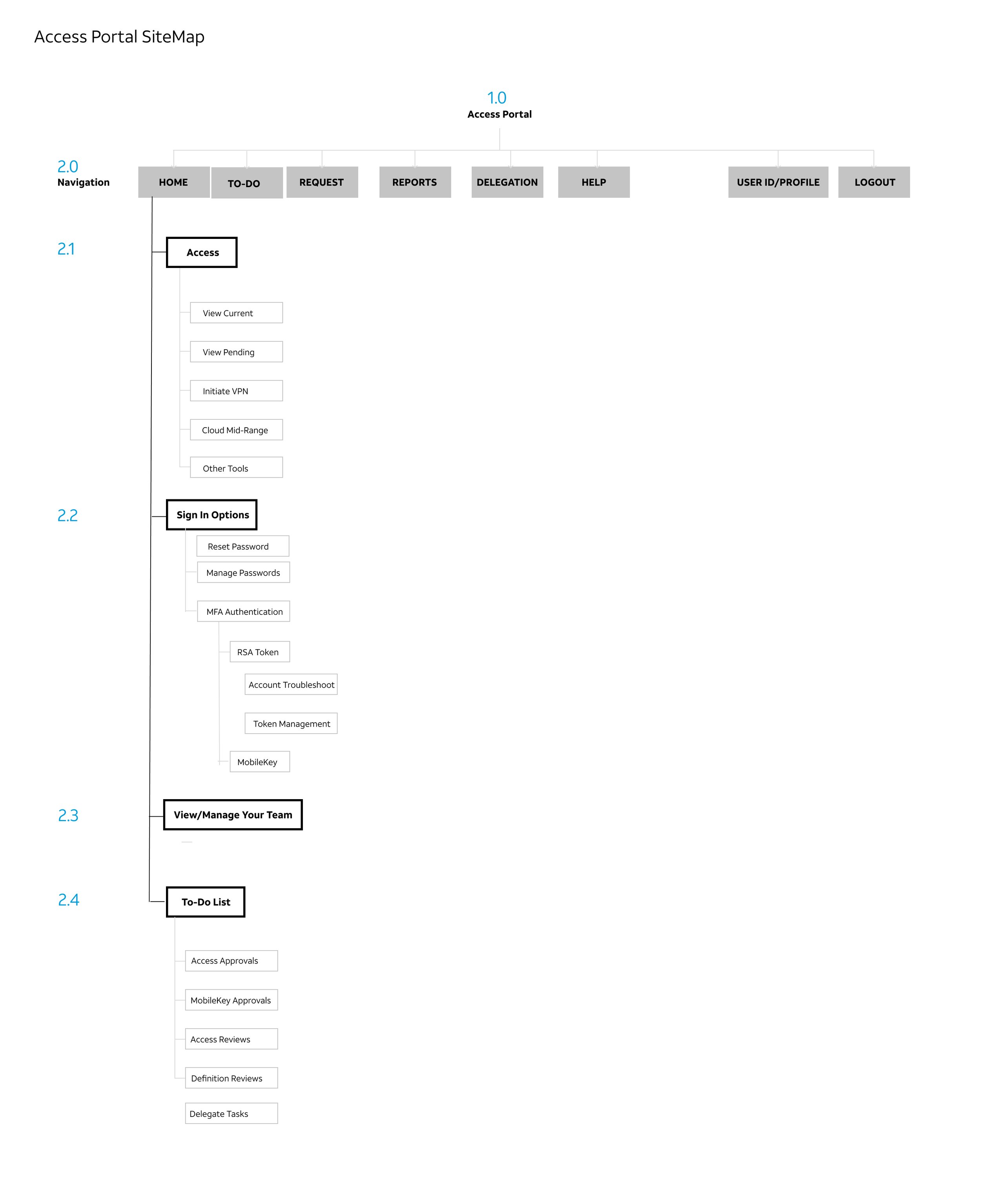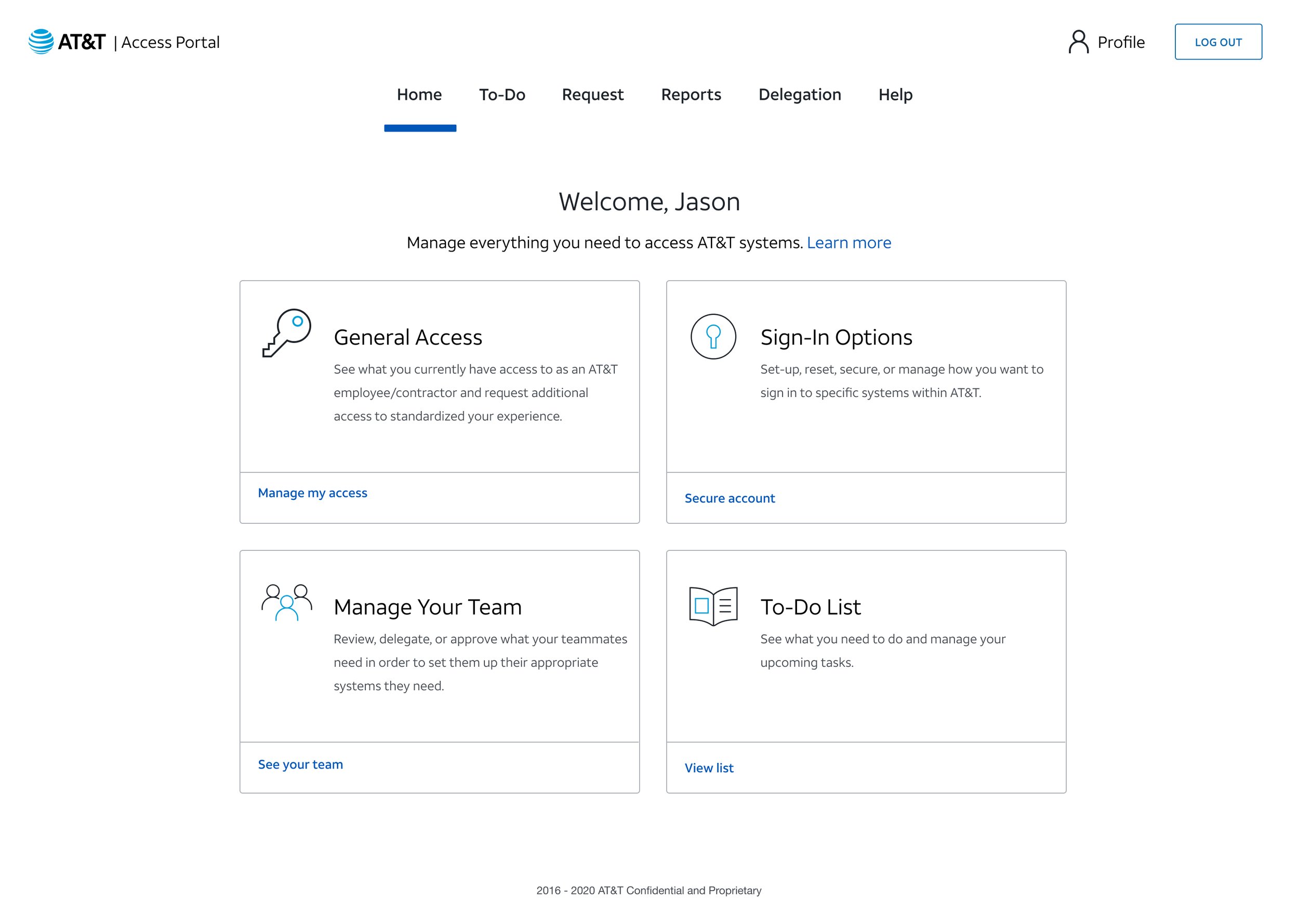ROLE:
Senior Product Designer
CATEGORY:
Security, Enterprise, Telecommunications
COMPANY:
AT&T
TIME FRAME:
3 Months
ABOUT
AT&T Access Portal is an all-in-one management system for AT&T employees and executives to receive administrative benefits with their AT&T credentials. This product was a key foundation to AT&T’s Chief Security Organization (CSO).
TEAM & ROLES
Payal Talati (Product Manager)
Andres Cardona (Front-End Engineer
)
Ron Caton (Associate Director of Chief Security)
1. UNDERSTAND/PRODUCT THINKING
The CSO team was seeking to revamp Access Portal with a new look and feel and a improved experience navigating different layers of access within AT&T. The current site was inaccessible due to confusing terminology and repetitive copy. which caused delays for AT&T employees to fulfill their roles without proper credentials.
The problem we wanted to solve was to streamline the AT&T employee experience by revising the grouping structure to reduce friction on the platform.
A) People Problem
AT&T Employees are unable to access proper credentials due to the abundance of access credentials the company has.
B) How did we know this was a problem?
The current interface displays a complex introduction due to repetitive terminology and a lack of onboarding onto the platform on how to better serve specific departments.
3) How do we know if we’ve solved this problem?
When AT&T employees and higher executives spend less time on the platform and ticket reports to I.T. are also reduced - site duration is about 20-30 minutes long.
2. DESIGN STRATEGY
REVIEWING EXISTING RESEARCH
PERSONAS AND THEIR PAIN POINTS
The organization had a repository of various personas that verified the type of users AT&T catered towards. After reviewing our research, I realized another user group was missing in this cycle based on the fact that a lot of the login and access issues were reported to I.T.
From that, I drafted another persona (I.T. Help Tesk) to ensure that Access Portal would cater to all AT&T employees regardless of tenure or position. Based on the research, I.T. normally resolves the issues through using Access Portal, but with the overwhelming requests, response time have been slow and we realized this would impact cognitive load for that user group.
auditing the current site
HOW CAN THE INTERFACE BE REARRANGED?
As I was reviewing the site, I noticed there was a lot of components that had dedicated functions and links that couldn’t be rearranged. However, the hierarchy of the whole site was messy and complicated to navigate due to lack of visual hierarchy, repetitive terms, and accessibility issues with color contrast.
One of the main things the team and I agreed that had to be present in the redesign was the following:
General Access
Sign-In Options
Manage Team Functions
To-Do List.
Original Site
STRUCTURING THE SITE ONCE MORE
WHAT IS NEEDED IN OUR SITEMAP?
I presented a sitemap to the team to indicate which existing functionalities can be bridged over to the overhaul and as well as terminology changes to eliminate confusion when users view this site for the first time. Since we were focusing on the homepage, the following functions and links were documented to ensure back-end and APIs were not affected.
3. DESIGN EXECUTION
comparing competitors in the security space
HOW DO OTHER COMPETITORS MAKE THEIR EXPERIENCE SEAMLESS?
I referenced other security based products to identify some common themes amongst their designs:
Simple Information & Headline: A topic is usually described in one word with some body copy.
Icon Utilizations: Icons are heavily used to guide users to connect the imagery with the topic information.
Use of brand colors: Colors allow users to distinguish areas and categories not related to each other in proximity.
Google Account - Security Settings
Twine Website
Visual Designs
THE REVISED LAYOUT OF ACCESS PORTAL HOMEPAGE
After comparing from a variety of competitors, I went into visual layout creation to present to the team for potential Q1 2021 launch. From the three layouts presented, version 1 had the most potential and capabilities to ease the start of the journey, especially having utilities operated as a side navigation.
The other versions were not capable from a development perspective due to creating another container of links as the delay from the front-end perspective.
Version 1
Version 2
Version 3
4. OUTCOME AND TAKEAWAYS
THE START OF MANAGING YOUR TEAMS
The execution helped the CSO organization tremendously from a design perspective as it gave direction to what Access Portal was going towards. The outcome from this was that the design was launched during Q1 2021, however the rest of the experience was still yet to be improved and redesigned to match look and feel.
The ultimate takeaway I took was that designing for larger and legacy systems would take time and design iterations would not be as fast. From this, I empathized with many of my co-workers on engaging the design process to my peers that were not familiar with UX and guided them to understand the relevance of it in their world.















